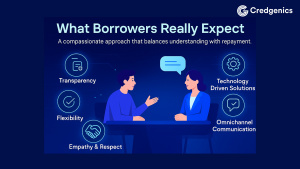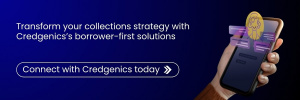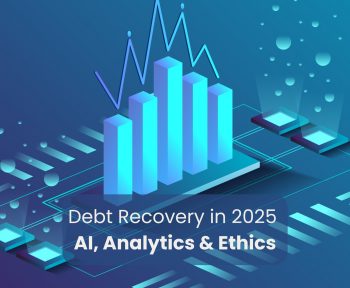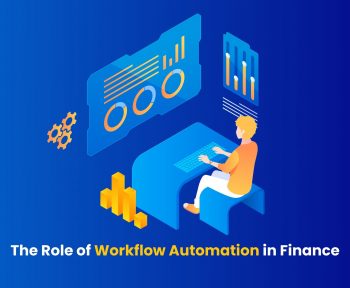As digital lending expands and fintechs continue to disrupt traditional banking, lenders and debt collectors are rethinking their strategies. Today’s borrowers expect a customer-centric collections process grounded in empathy, transparency, and respect. When handled well, collections not only improve recovery rates but also strengthen customer relationships and enhance brand reputation.
Recognizing that a superior customer experience in debt collections drives better outcomes, organizations must understand what borrowers value during collections to balance effective recovery with long-term satisfaction. Let’s explore how this shift is reshaping the industry for both creditors and borrowers.
The evolution of debt collections
With changing consumer habits and stricter regulations, the debt collection industry has quickly adapted. Digital lending and fintech companies have also accelerated this shift by prioritizing customer relationships throughout the lending cycle, including collections. Borrowers now expect transparency, flexibility, and convenience—even when managing overdue payments.
Fintech companies have introduced innovations like automated payment plans, mobile notifications, and easy-to-use customer self-service portals. These tools empower borrowers to manage their debts proactively while reducing the stress and embarrassment often associated with delinquency.
Regulatory changes have also played a crucial role in this evolution. Governments and regulatory bodies worldwide now mandate that collectors treat borrowers fairly and respectfully. Non-compliance can result in hefty fines and legal action, making it critical for companies to align their strategies with ethical standards.
Moreover, empathy and personalization have become central to effective debt collection. Collectors who understand a borrower’s financial difficulties can offer solutions that work for both parties. Personalized repayment plans, tailored communications, and proactive support make the repayment process less daunting.
Why customer experience in debt collections matters
You might wonder why customer experience matters in debt collection. While repayment remains the primary objective, how it is achieved makes a significant difference for both the lender and the borrower.
#1. Higher recovery rates through positive borrower engagement
Studies show that borrowers who experience empathy and flexibility are more likely to make payments. Friendly reminders, clear explanations of available options, and open communication channels can prevent accounts from progressing to severe delinquency or default. This positive customer experience in collections directly translates to improved financial outcomes.
#2. Retention of borrowers as future customers
Debt collection doesn’t have to mark the end of a customer relationship. A borrower who feels respected and supported during tough times is more likely to return for future products or services once their financial situation improves. For banks, financial institutions, and fintech firms, retaining a satisfied customer is far more profitable than constantly acquiring new ones. A borrower-first customer experience in collections strategy can ultimately boost lifetime customer value.
#3. Reduced reputational risks and complaints
In the age of social media and online reviews, reputation matters more than ever. Aggressive or unethical collection tactics can quickly turn into public relations nightmares. Conversely, positive borrower experiences can lead to word-of-mouth referrals and favorable online feedback. Satisfied borrowers are less likely to file complaints with regulators or escalate issues legally, reducing financial and operational risks for lenders.
#4. Regulatory compliance (Consumer protection, privacy, and ethical standards)
Customer-centric collections also minimize compliance risks. Fair treatment of borrowers aligns with legal standards and reduces the likelihood of lawsuits or sanctions. Many regulators encourage proactive communication, clear disclosures, and respectful engagement—all pillars of a customer-first approach. Additionally, data privacy regulations demand responsible handling of personal information, making trust and transparency critical components of any modern collection strategy.
What borrowers really expect

What borrowers want from debt collectors is not forcefulness but understanding. They seek a gentle approach that recognizes their situation while still encouraging repayment. Here’s what borrowers truly expect from the debt collection process:
#1. Transparency: Clear communication on dues, options, and consequences
Borrowers want clarity. Complex statements or hidden fees only increase their stress. They need to know:
- How much they owe: A clear breakdown of principal, interest, late fees, and penalties.
- What options are available: Payment plans, settlements, or hardship programs.
- The consequences of non-payment: Legal action, credit score impact, or additional charges.
#2. Flexibility: Payment plan options and due date adjustments
Today’s borrowers expect, and increasingly demand, flexibility, such as:
- Customized payment plans: Based on income, financial obligations, or temporary hardships.
- Deferred payments: For those experiencing short-term financial strain.
- Partial payments: An interim solution to avoid default.
Offering flexible options demonstrates empathy and increases the likelihood of successful recovery while enhancing the overall customer experience in debt collections.
#3. Empathy and respect: A non-threatening, understanding tone
Borrowers want to be treated as individuals, not as delinquent accounts. Therefore, collectors should:
- Communicate next steps and resolution timelines clearly.
- Use respectful and supportive language.
- Acknowledge borrowers’ circumstances without judgment.
- Provide helpful solutions and resources to assist with repayment.
#4. Convenience: Omnichannel communication
Borrowers expect convenience across every interaction, including collections. They want to engage through their preferred channels, such as SMS (text messages), email, phone calls, mobile apps, and online self-service portals.
Omnichannel access allows borrowers to make payments, request information, or negotiate arrangements at their preferred time. This approach reduces friction and empowers borrowers to take control of their debt while improving the customer experience in collections.
#5. Data security and privacy: Assurance that personal and financial information is protected
Borrowers are understandably concerned about how their personal information is handled. Debt collectors must prioritize:
- Secure data storage and transfer protocols.
- Compliance with data protection laws like the DPDP Act.
- Transparent privacy policies explaining how borrower data is used.
When borrowers trust that their information is secure, they are more likely to engage and disclose necessary financial details to negotiate repayment terms.
The role of technology in enhancing customer experience

Technology is revolutionizing debt collections, transforming it from traditionally manual and confrontational methods into sophisticated, customer-centric interactions. This evolution significantly improves the borrower experience while delivering better outcomes for businesses.
Key technological innovations
- AI-powered Personalization: AI analyzes real-time data to create repayment solutions tailored to a borrower’s financial situation, such as income-driven schedules or dynamically adjusted interest rates.
- Predictive Analytics: By assessing historical payment behavior, spending habits, and other indicators, predictive models identify at-risk borrowers before delinquency occurs, enabling proactive outreach.
- Digital Self-Service Portals: These platforms provide 24/7 access to account information, flexible payment options, and financial education resources, empowering borrowers to manage debt with reduced stress.
- Process Automation: Automating tasks like payment reminders, statement generation, and transaction tracking streamlines operations, reduces errors, and allows agents to focus on complex cases.
- AI Voicebots and Chatbots: AI-driven Voicebots and chatbots provide instant, accurate connect and support around the clock, improving responsiveness and customer satisfaction without requiring human interaction.
These innovations foster understanding and empathy while delivering personalized solutions that improve cooperation and reduce defaults.
The business impact of better customer experience in debt collections
Customer-first collections are good for borrowers and make strong business sense. Organizations adopting customer-centric debt collection strategies consistently experience:
- Faster repayments and fewer defaults.
- Increased customer loyalty and positive referrals.
- Lower operational costs through automation.
- Stronger brand reputation built on ethical practices.
Conclusion
By leveraging technology, embracing empathy, and incorporating borrower feedback, lenders can turn difficult situations into collaborative solutions. Organizations that embrace this shift are proving that treating borrowers with respect, dignity, and understanding does not compromise collection effectiveness, it enhances it. The future of customer experience in debt collections is customer-centric, and the organizations that embrace this approach will lead the industry forward.
FAQs
1. Why is customer experience important in debt collection?
Customer experience in collections plays a crucial role as it helps improve recovery rates, builds long-term borrower relationships, and protects a company’s reputation. When borrowers feel respected, understood, and supported, they are more likely to cooperate, make payments on time, and remain loyal customers.
2. How has technology changed the debt collection process?
Technology has transformed debt collection by introducing AI-powered personalization, predictive analytics, digital self-service portals, and process automation. These innovations allow lenders to offer flexible, empathetic, and convenient solutions, which makes repayment less stressful for borrowers while improving outcomes for businesses.
3. What do borrowers expect from a modern debt collection process?
Modern borrowers expect transparency, flexibility, convenience, and data security. They want clear information about their debt, personalized payment options, respectful communication, multiple digital channels for interaction, and assurance that their data is handled securely. Together, these elements define a superior customer experience in debt collections.
4. How can lenders personalize the debt collection experience?
Lenders can leverage AI to personalize debt collection by analyzing financial data to create flexible repayment plans, tailor communication methods, and deliver proactive support aligned with each borrower’s unique circumstances. This personalized approach fosters a sense of understanding, which increases borrower engagement and repayment willingness.
5. What role does regulatory compliance play in debt collection?
Regulatory compliance ensures that debt collectors treat borrowers fairly, protecting consumers from aggressive or unethical practices. Adhering to consumer protection laws, data privacy regulations, and ethical standards reduces legal risks and fosters trust between lenders and borrowers. This approach supports a positive customer experience in collections.






